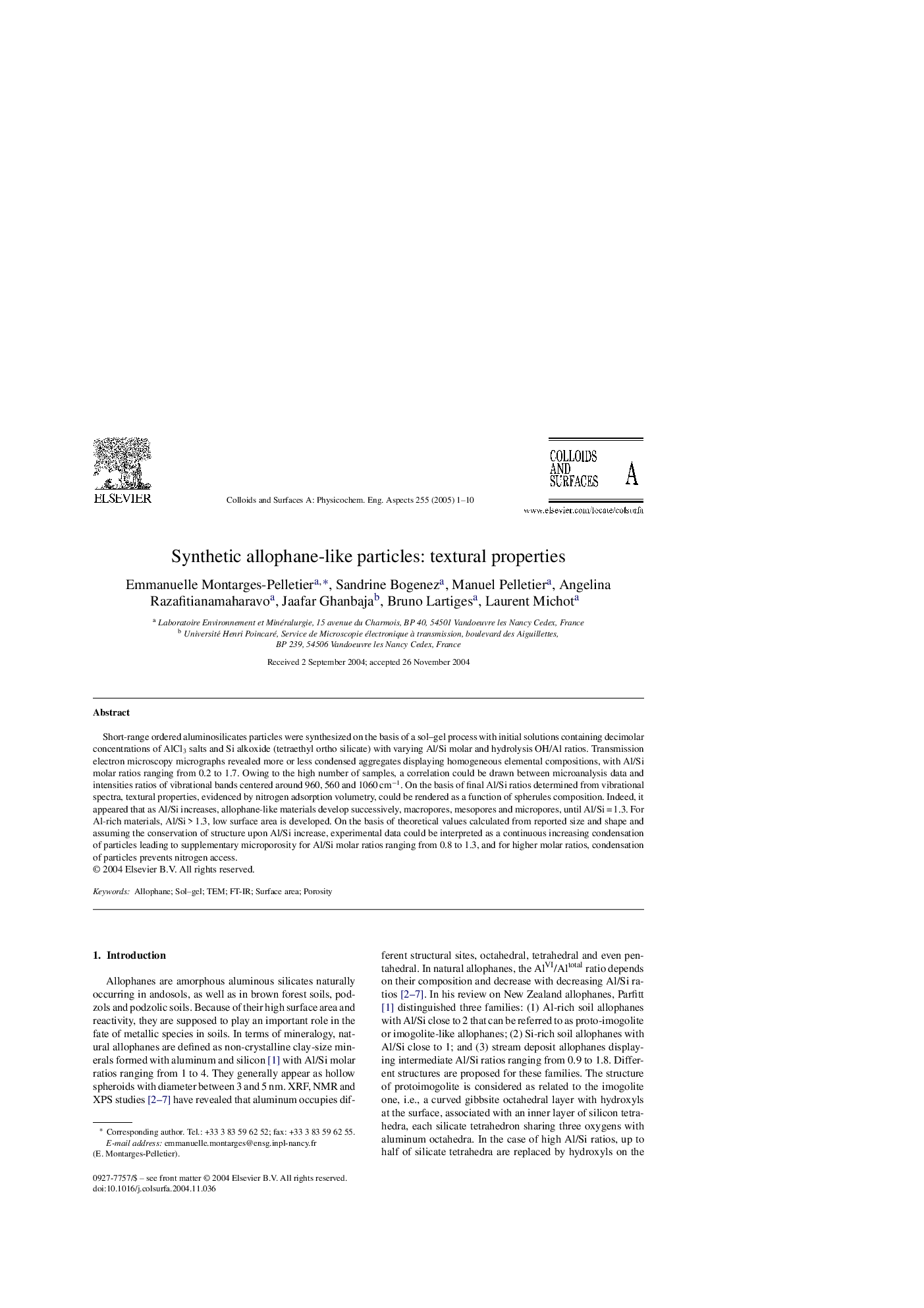| Article ID | Journal | Published Year | Pages | File Type |
|---|---|---|---|---|
| 9676050 | Colloids and Surfaces A: Physicochemical and Engineering Aspects | 2005 | 10 Pages |
Abstract
Short-range ordered aluminosilicates particles were synthesized on the basis of a sol-gel process with initial solutions containing decimolar concentrations of AlCl3 salts and Si alkoxide (tetraethyl ortho silicate) with varying Al/Si molar and hydrolysis OH/Al ratios. Transmission electron microscopy micrographs revealed more or less condensed aggregates displaying homogeneous elemental compositions, with Al/Si molar ratios ranging from 0.2 to 1.7. Owing to the high number of samples, a correlation could be drawn between microanalysis data and intensities ratios of vibrational bands centered around 960, 560 and 1060 cmâ1. On the basis of final Al/Si ratios determined from vibrational spectra, textural properties, evidenced by nitrogen adsorption volumetry, could be rendered as a function of spherules composition. Indeed, it appeared that as Al/Si increases, allophane-like materials develop successively, macropores, mesopores and micropores, until Al/Si = 1.3. For Al-rich materials, Al/Si > 1.3, low surface area is developed. On the basis of theoretical values calculated from reported size and shape and assuming the conservation of structure upon Al/Si increase, experimental data could be interpreted as a continuous increasing condensation of particles leading to supplementary microporosity for Al/Si molar ratios ranging from 0.8 to 1.3, and for higher molar ratios, condensation of particles prevents nitrogen access.
Related Topics
Physical Sciences and Engineering
Chemical Engineering
Colloid and Surface Chemistry
Authors
Emmanuelle Montarges-Pelletier, Sandrine Bogenez, Manuel Pelletier, Angelina Razafitianamaharavo, Jaafar Ghanbaja, Bruno Lartiges, Laurent Michot,
